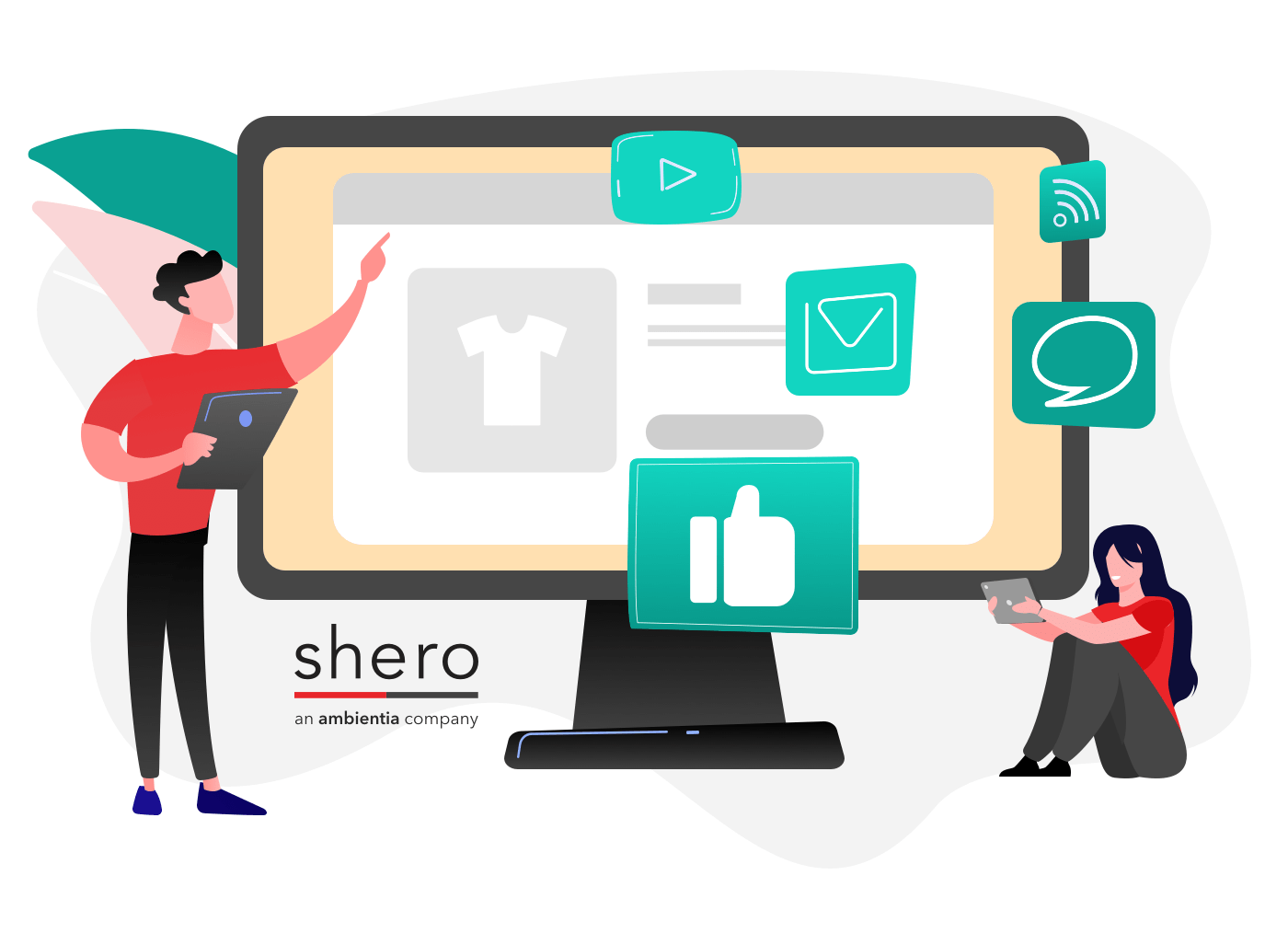Email marketing is vital for any eCommerce business, and MailChimp is one of the largest, most popular email marketing platforms in eCommerce today. Their user-friendly tools provide a simple way for small- to medium-sized businesses to engage with customers and fans through newsletters, email campaigns, and automated emails. As MailChimp has grown in popularity, they’ve used their reach to educate retailers too. Today they’re a leading advocate for email marketing standards and best practices across the digital marketplace.
Recently, MailChimp announced a pretty big change to their default email signup process. It’s a hard left-hand turn for them, so you might be wondering why they’ve made the change and what it means for you. Today I’ll explain the change and help you decide what’s best for your own email marketing process. In case you missed it, here’s MailChimp’s email announcement:
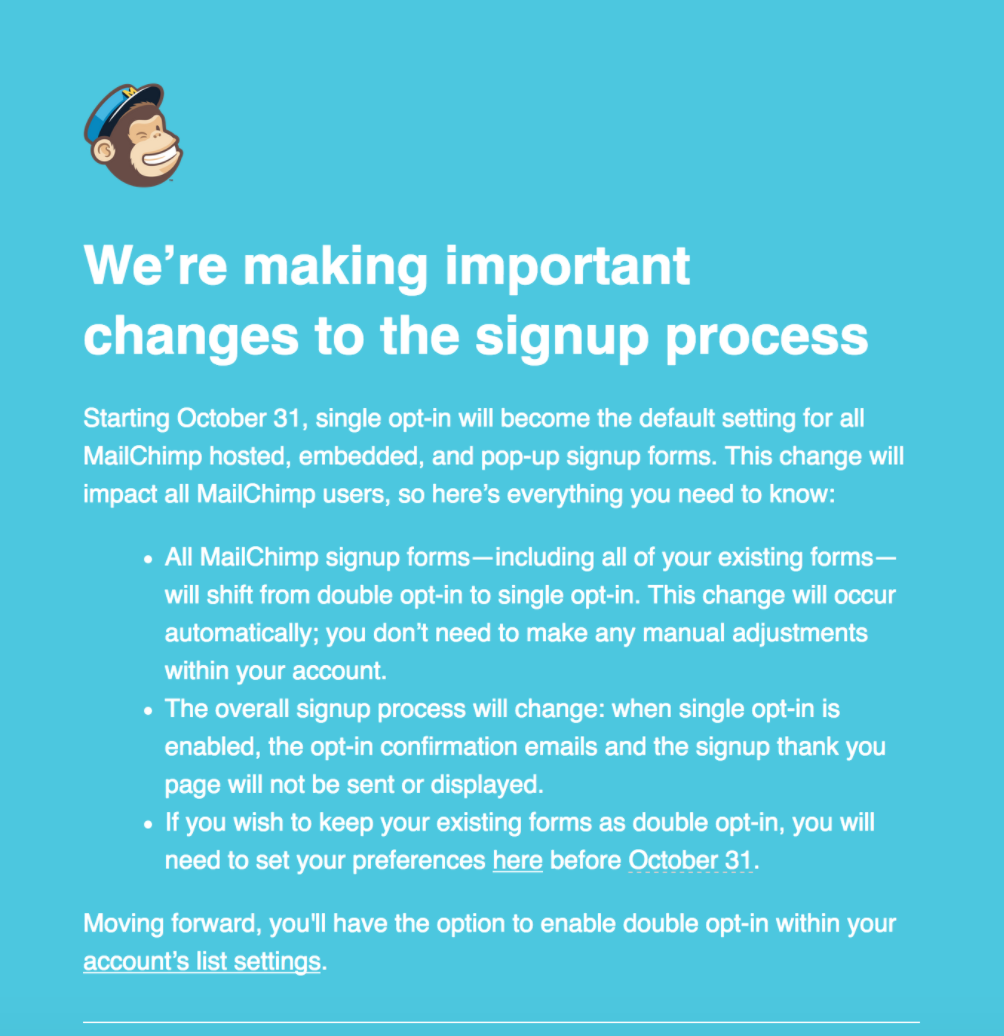
The Old Standard: Double Opt-in
Until recently, MailChimp recommended a double opt-in process for new subscriber signups. Double opt-in was the default setting for all email lists. In this process, a user enters their email address in a pop-up or form on your website. Then, they must complete the signup by clicking on a link sent to their email inbox to verify their email address. The flow looks like this:
The benefits of a double opt-in process:
- A better, higher quality list – You know that every email address is correct and that every recipient definitely wants to receive your emails.
- An additional touchpoint – A verification email is a great opportunity to communicate with new fans directly. You can set expectations on email frequency, tell your brand story, promote your social media channels, or even add value to a special offer or “Thanks for signing up!” promotion.
The New Standard: Single Opt-In
On October 31st, MailChimp will change the default setting from double opt-in to a single opt-in process instead. As the name implies, single opt-in cuts the email verification steps and simply adds a new user to your list as soon as they submit the signup form. The Single Opt-In flow looks like this:
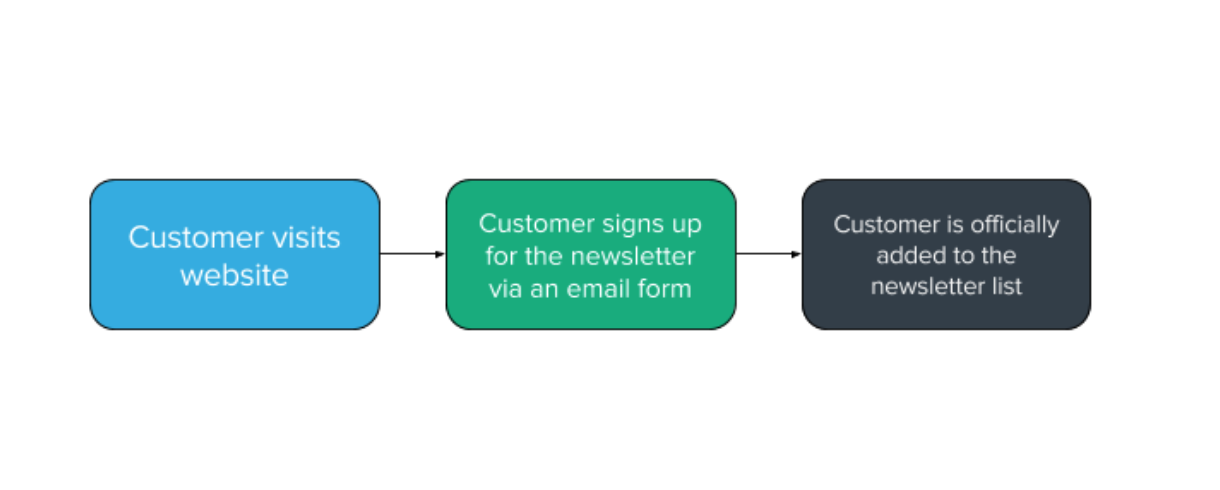
The single opt-in process isn’t new. It’s always been an option, and you may already be using it. The big news is that, after years of recommending double opt-in, MailChimp is now pushing single opt-in. On October 31st, single opt-in will be the default setting for both new lists and existing lists (unless you’re in Europe—then your existing lists will stay as-is). Considering MailChimp’s status as a market leader and advocate for best practices, this could have a significant impact on other email marketing services as well.
The benefits of a single opt-in process:
- More subscribers – Single opt-in makes it easier for users to sign up. Some users may get distracted during signup, or they just don’t want to do that extra step to verify their email address. Single opt-in eliminates the need, so you’ll wind up with more subscribers.
- The chance to win over more fans – A single opt-in process will net you two customer types: the very interested customers who would’ve been willing to verify their email address, and the borderline-interested customers who wouldn’t take that extra step. Perhaps they’re only looking for a discount for a one-time purchase, or they’re not fully sold on your brand yet. A single opt-in process gives you the chance to interact with both customer types and win over the fence-sitters.
Why The Change?
Why is MailChimp making this move now? I believe the answer is pretty simple: Revenue.
MailChimp uses a month-to-month subscription pricing model. Your monthly cost isn’t a flat fee; it’s based on how many email subscribers you have. Here are some examples from their pricing page:
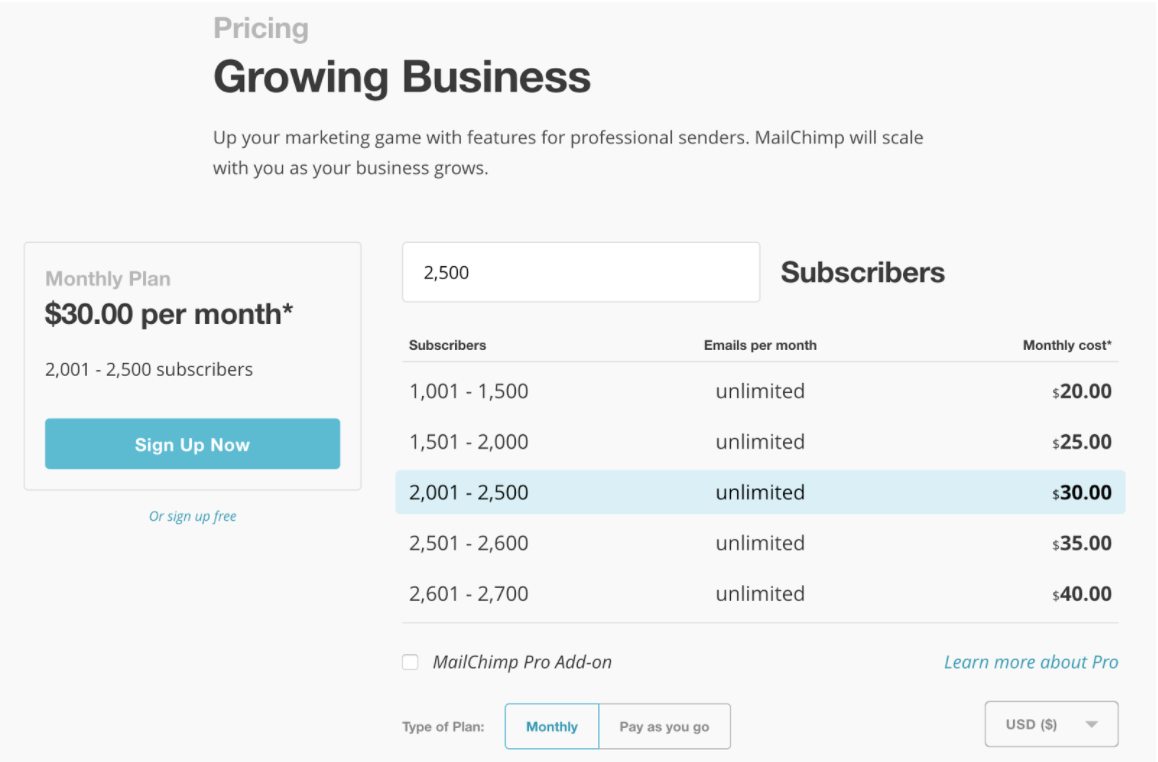
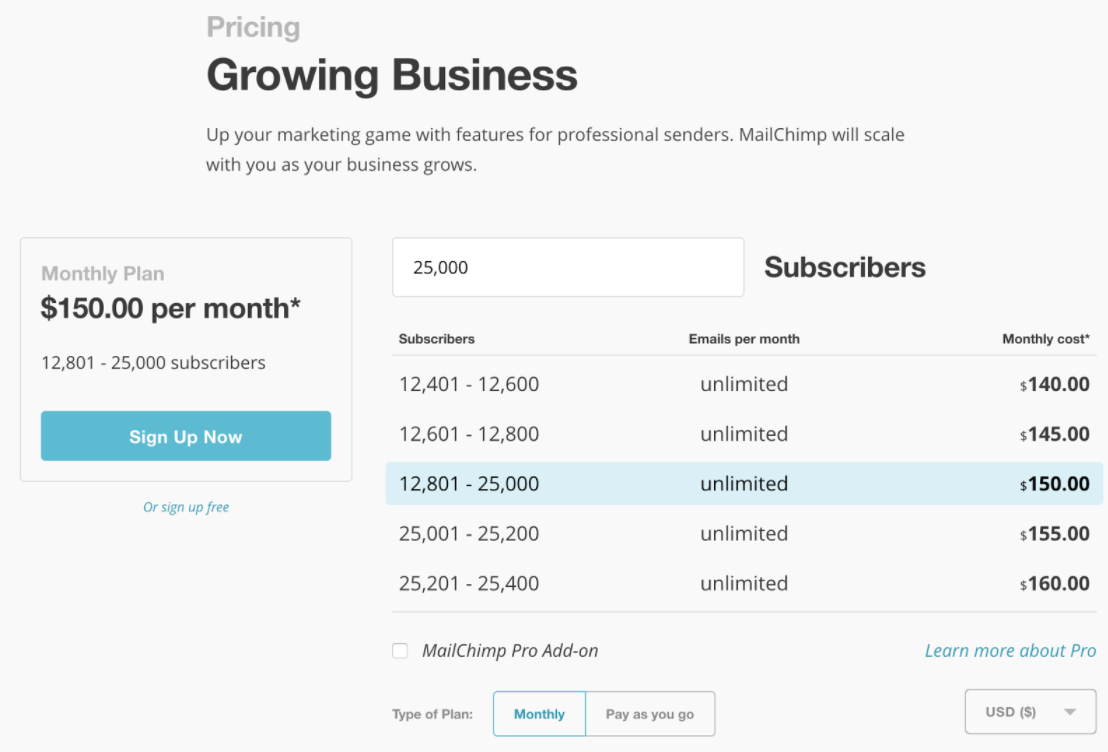
What Does This Mean for Me?
You’ll need to decide whether to use the single or double opt-in process. If you decide to use a single opt-in, you won’t need to do anything; on October 31st, your existing lists will change to this setting. If you decide a double opt-in process is best for you, you’ll need to change your settings for each list from single opt-in to double opt-in after October 31st.
Note: It’s important to grow your email marketing lists through organic, authentic user signups. MailChimp does not allow its customers to import purchased marketing lists; doing so leads to spam complaints and legal compliance issues. MailChimp takes this very seriously, so don’t buy lists and import them into MailChimp, ever. It’s a great way to get your account shut down.
How Should I Decide?
Always keep the goal in mind: What you want is more engagement and conversions, not simply more subscribers. MailChimp hasn’t released any numbers or studies showing that single opt-in is better for either. Until they do, we recommend a double opt-in process. It’s better for your budget, and you’ll know you’re engaging with people who truly want to engage with you.
That said, every business is different, so feel free to experiment. You can try each process for 3 months and then compare the results. Digital marketing often boils down to trial and error, and experimenting here carries a minimal risk. The only potential drawback is higher monthly costs for MailChimp, so just keep that in mind when timing your experiments.
Mailchimp has been widely criticized by the lack of awareness of European law (GDPR) and it’s incoming rules that “force” any signup to come with a double opt-in signup validation. In the land of eCommerce where merchants can’t “predict” who will sign up for their newsletter and where they are living (GDPR states that the rules apply to the customer, not the account holder) you will most likely have to use double opt-in to remain compliant with GDPR law. This yields the single opt-in approach completely mute for 95%+ of merchants that “could” have international customers and fans sign up for their newsletter.
A Note About Results
As you assess your metrics, keep in mind that a single opt-in process could change your percentage rates, because your total list size should grow. Again, the focus here should be on engagement and conversion, not percentages. Your engagement—measured by things like the number of opened emails—shouldn’t change regardless of which process you use. Here’s an example:
Original size with double opt-in: 20000 subscribers and 2000 opens = 10% open rate
New size due to single opt-in: 30000 subscribers and 2000 opens = 6.67% open rate
Your percentage has decreased, but your engagement hasn’t dropped. In this example, you could feel confident moving back to a double opt-in process, because the extra money you’re spending per month isn’t netting you better results. Of course, if your engagement rises significantly, you’d want to stay with single opt-in, because the extra monthly investment is paying off.
Talk to Us!
What do you think about this new standard? Will you be using the single or double opt-in method, and why? Let us know in the comments!
If you have other questions about Mailchimp or our digital marketing services contact us directly..




